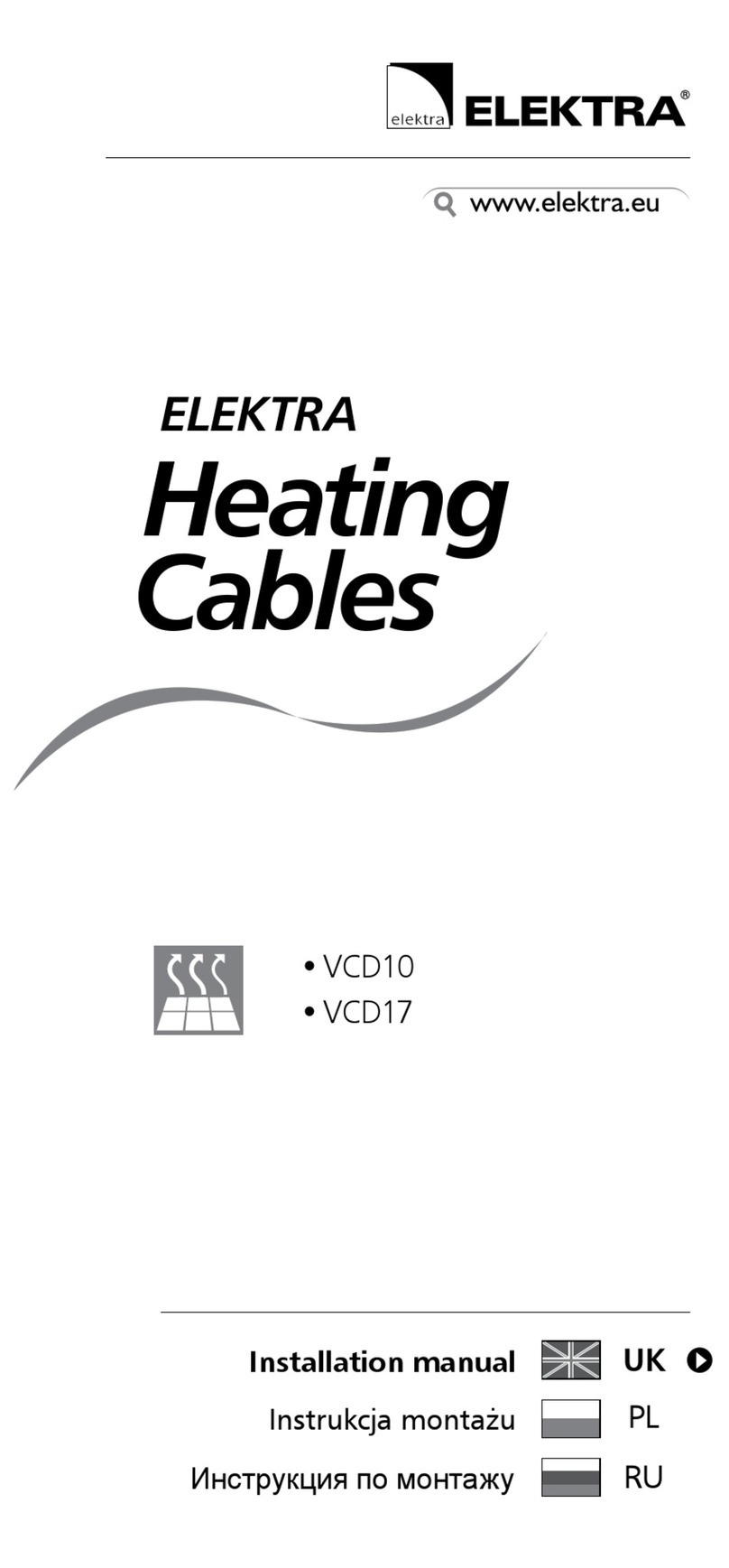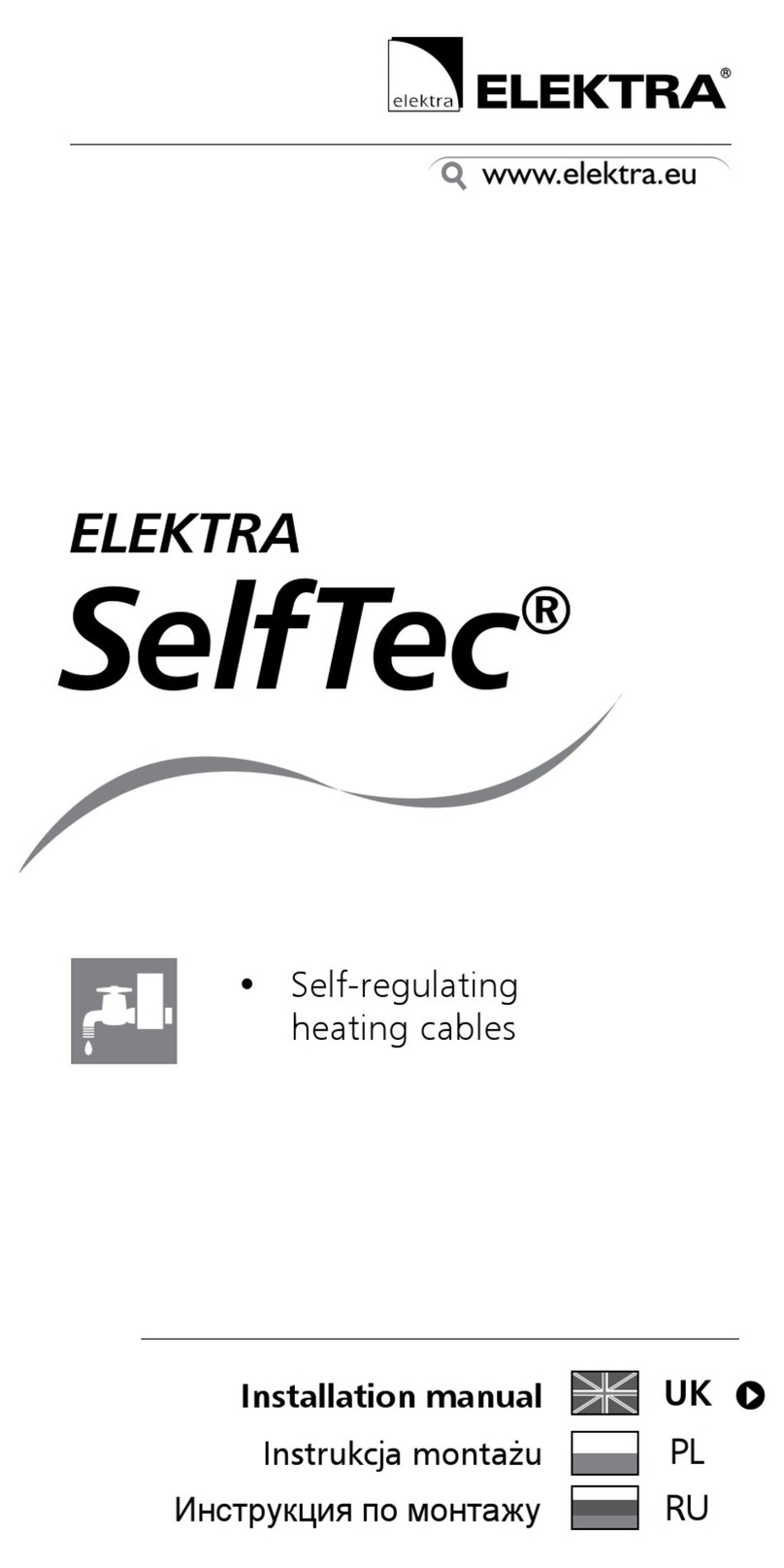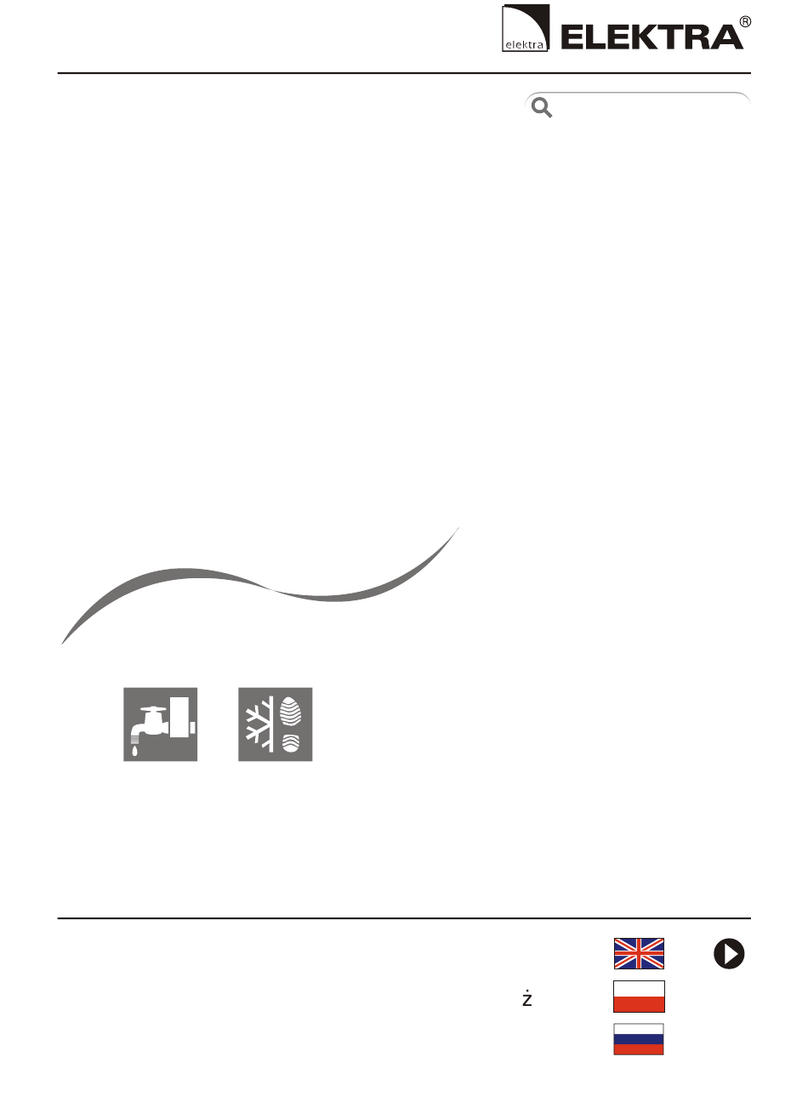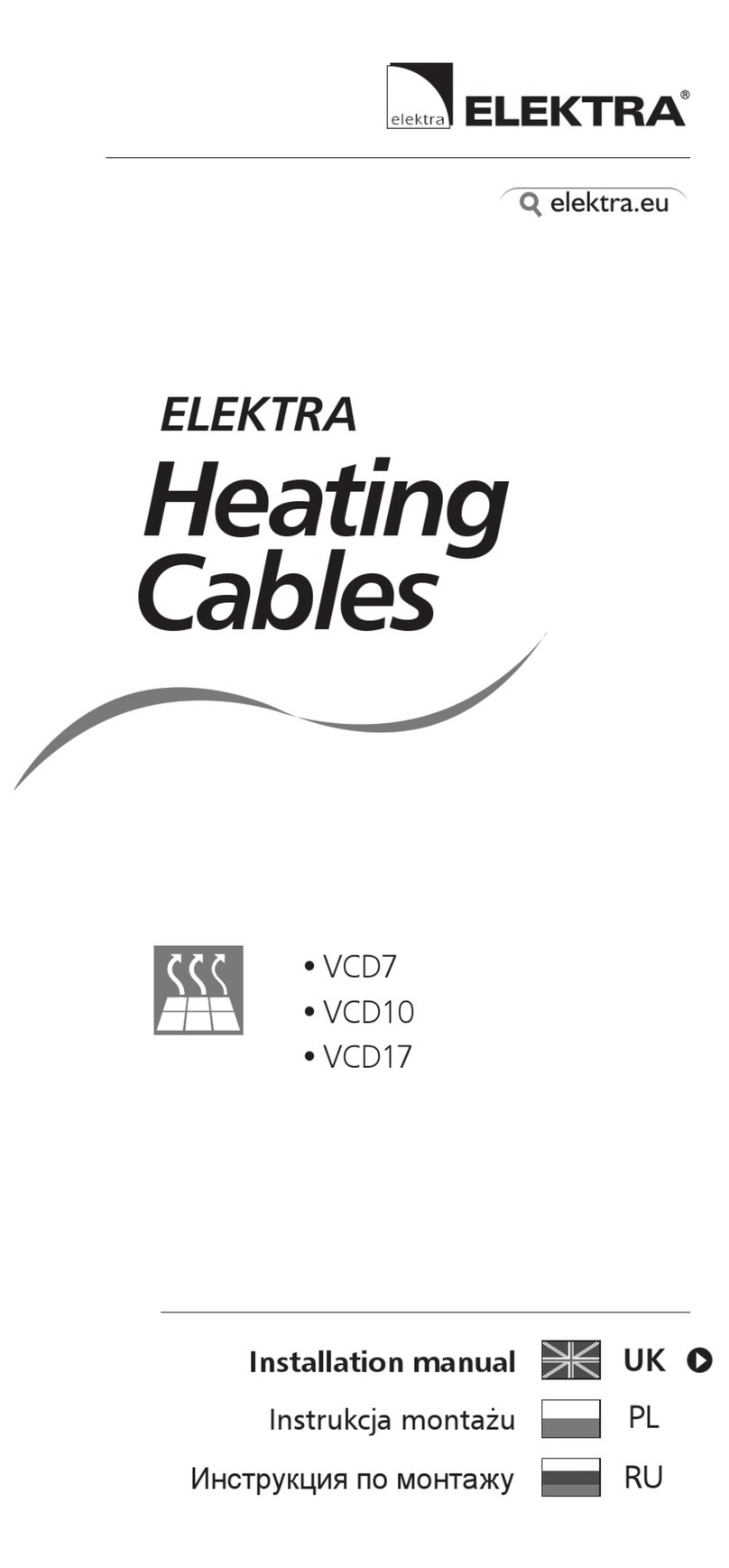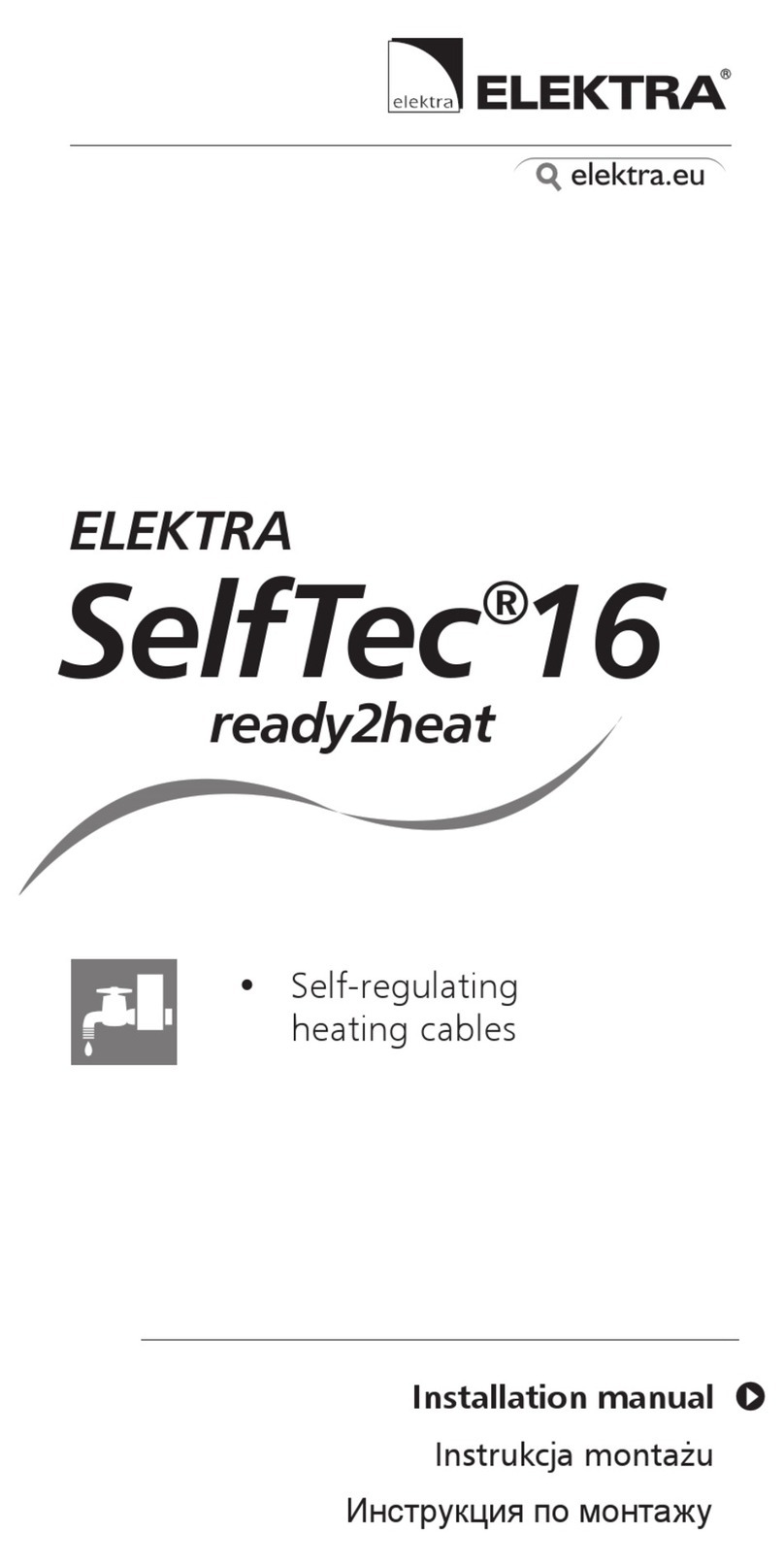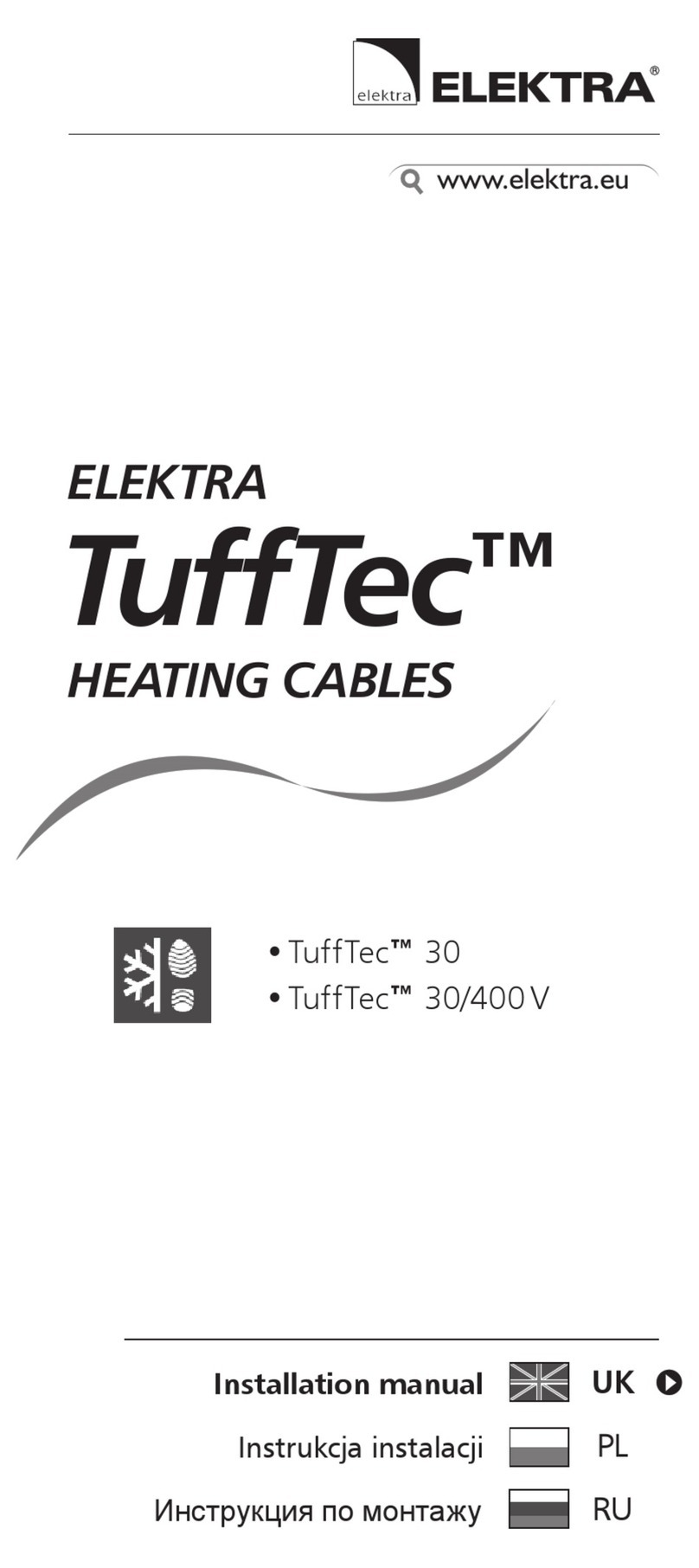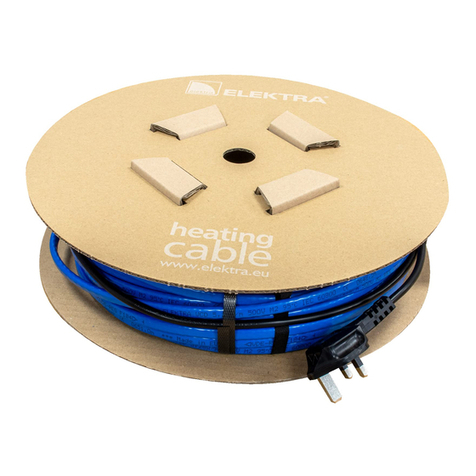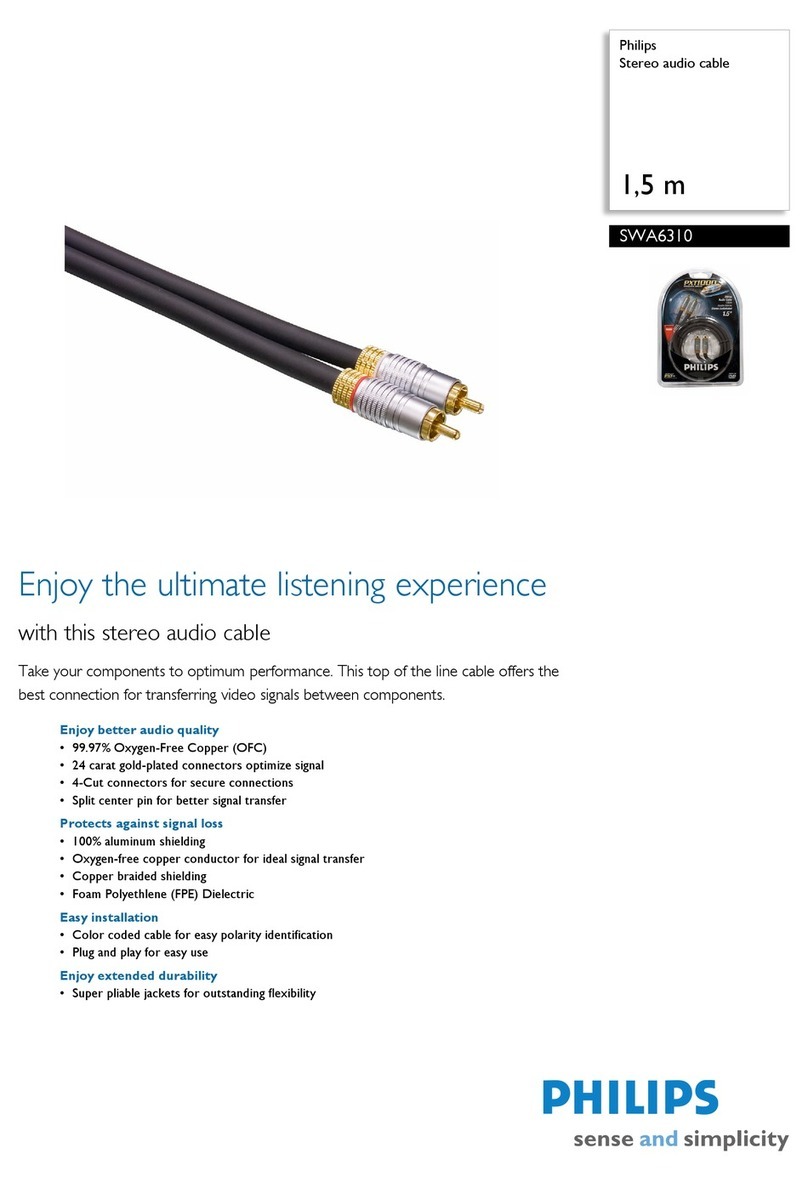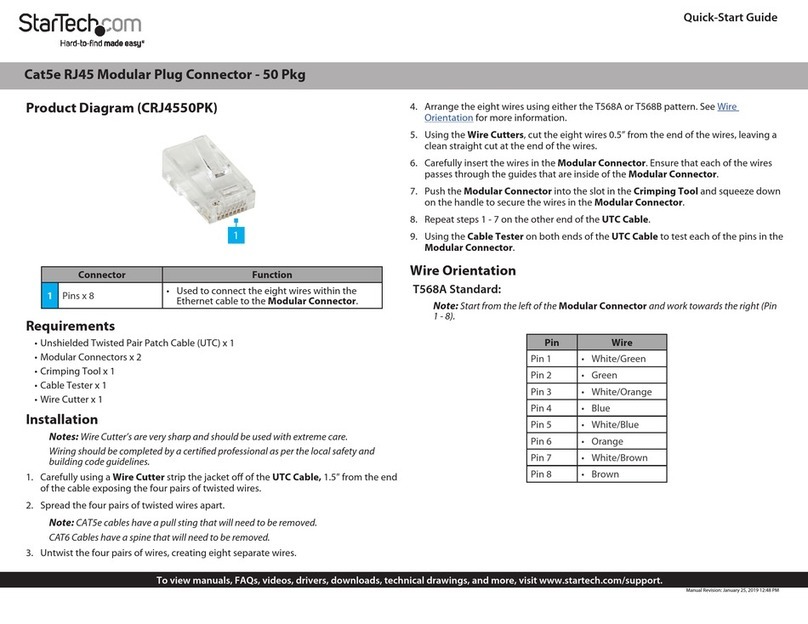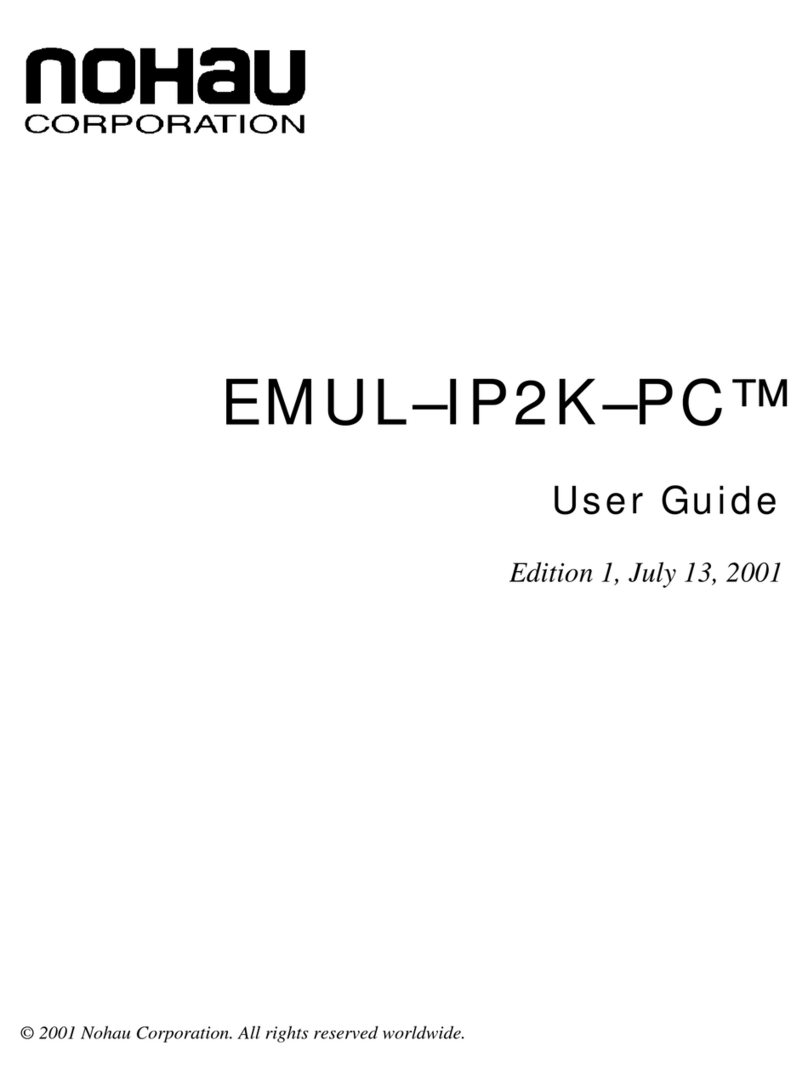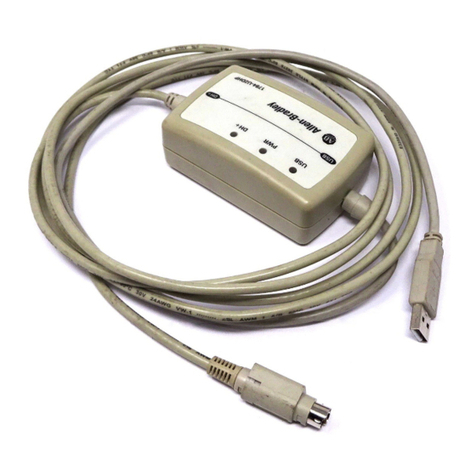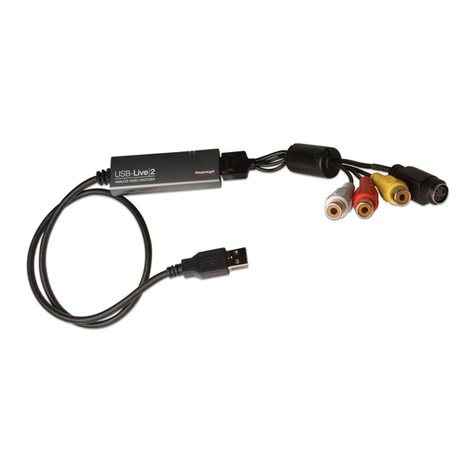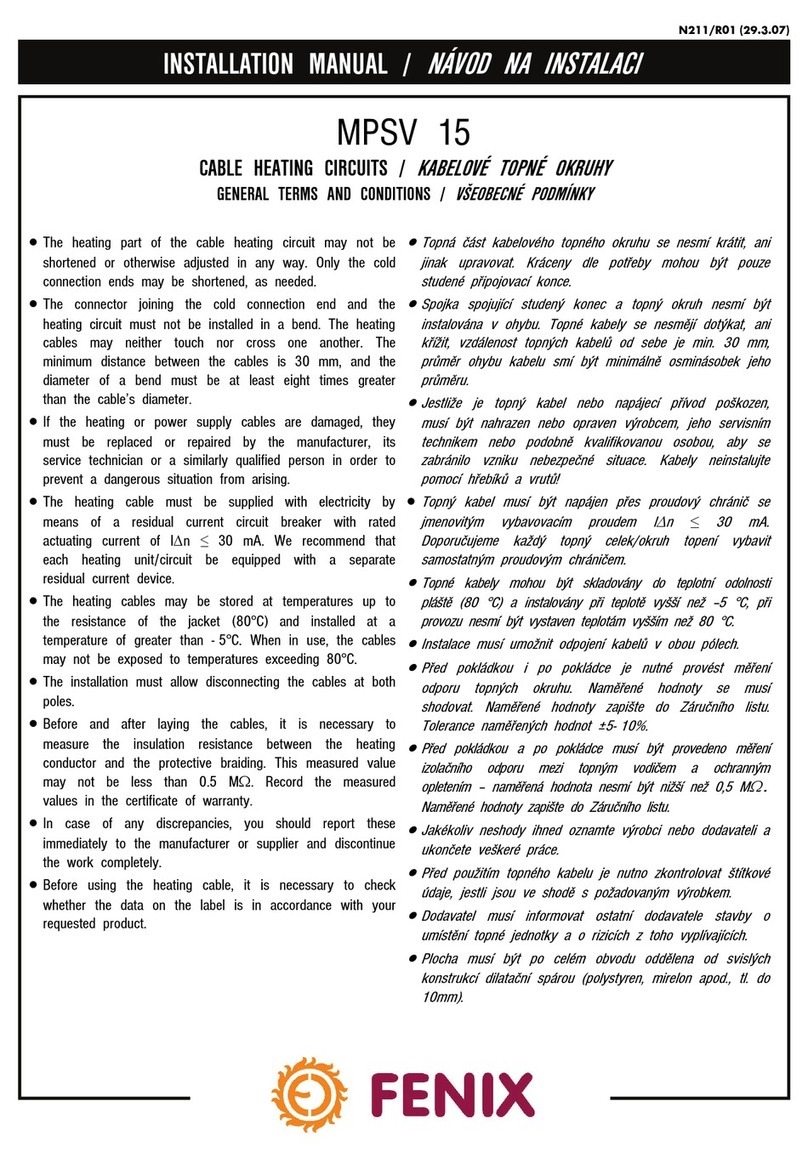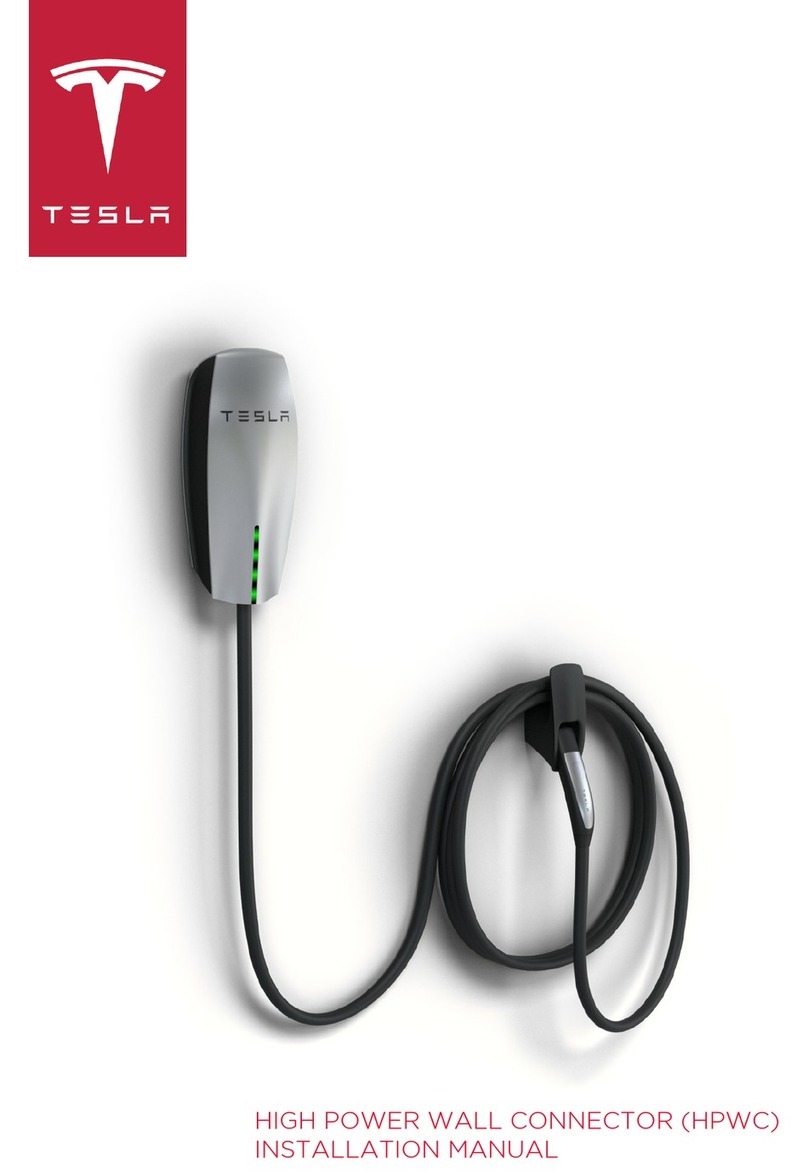
ELEKTRA
Heating Cables
Installation
Stage 1: Heating cable’s
installation
Before commencing the installation of the sys-
tem, it is required to assess the necessary heat
output per ft2(m2), as well as calculate the re-
quired spacing of the heating cable.
In order to calculate the required heating cable’s
spacing, apply the following formula:
a-a=S/L
where:
a-a: distances between cables,
S: surface area, for the surface heated with the heating cable,
L: heating cable’s length
To maintain xed positioning of the cable and
steady spacing conforming to the calculated
values, the cables need to be attached with the
ELEKTRA TME installation tape (the tape should
be positioned with the distances of 40 cm) or in-
stallation mesh of 2” x 2” (50 mm x 50 mm) grid,
made of Ø 0.08” (Ø 2 mm) wire.
TME installation tape
Additional temperature and moisture sensor can
be connected to this controller, which will enable
protection of two outdoor areas. Enables control
of two independent zones, e.g. garage driveway
and gutters, with one controller.
8
